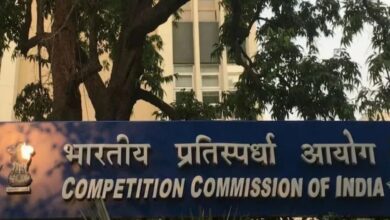New NPS partial withdrawal guidelines: explanations of the rationale, restrictions, timing, and other aspects of the National Pension System
New guidelines for partial discontinuation of NPS: The regulations controlling partial withdrawals from the National Pension System (NPS) have changed as of February 2024. Important things for subscribers to think about are brought about by these adjustments. This is how the new regulations operate and when it makes sense to choose a partial withdrawal.

New guidelines for withdrawing partially from NPS
As per an ET article, NPS users may now take withdrawals from their pension funds after three years of completion, as of February 1.The amount of the withdrawal is limited, however. The Pension Fund Regulatory and Development Authority (PFRDA) recently released a circular stating that subscribers may withdraw up to 25% of their payments. It’s important to remember that neither the employer’s part of the contributions nor the profits from those contributions may be withdrawn.
For example, if you deposited Rs 4 lakh in NPS and your corpus increased to Rs 10 lakh, you may only take Rs 1 lakh, or 25% of your contributions. Partial withdrawal of the remaining Rs 10 lakh corpus is not permitted.
Justifications for a partial retreat
It is permitted to withdraw part of your NPS for a number of reasons, such as:
Higher education for children
marriage of children (PFRDA stated that under the term of “children” for marital withdrawals, lawfully adopted children are included.)
Purchasing or building the first residence: Before, NPS members may take out money to construct or purchase a property in their own names or with their spouse, even if it wasn’t their first. However, according to Nirav Karkera, Head of Research at Fisdom, they are no longer able to withdraw money for this reason if they already own a home.
For medical needs, such as hospital stays and medical expenses for conditions such as COVID-19, renal failure, pulmonary arterial hypertension, multiple sclerosis, organ transplants, heart surgery, stroke, heart attacks, coma, blindness, paralysis, and major accidents.
Accidental and medical costs resulting from a handicap
Activities for self-improvement or skill development
creation of businesses or startups
Limitations and regularity of partial NPS discontinuation
During the life of your NPS account, you may make up to three withdrawals, each occurring five years apart. This regulation does not, however, apply if you are taking a leave of absence to address a specific ailment. According to PFRDA, only contributions made after the prior withdrawal are permitted for further withdrawals. You are only able to take 25% of your contributions between two partial withdrawals, according to Karkera.
Procedure for Partial Withdrawal from NPS
An NPS subscriber must submit a withdrawal request and a self-declaration outlining the reason for the request in order to seek a withdrawal. This has to be completed via the government nodal office or point of presence and the central record-keeping agency (CRA). A family member may submit the form on behalf of a subscriber if the subscriber is unwell and unable to do it themselves. The CRA starts processing the withdrawal request as soon as it is filed.
Tax ramifications
Partial withdrawions from NPS have no tax ramifications. Partial withdrawals are tax-free, claims Abhishek Kumar, the founder of SahajMoney and a SEBI licensed investment adviser (RIA).
Is it wise to choose an NPS partial withdrawal? Karkera was cited as stating that NPS is essential for retirement planning as it offers tax advantages and is intended to maximize retirement savings via compound growth. A safe retirement is a long-term objective, therefore weighing your present financial needs against them is important when deciding whether to take 25% of your NPS account withdrawal.
Although NPS permits withdrawals for significant life events like as marriage, schooling, medical crises, or house ownership, it’s crucial to keep in mind that its primary objective is to provide retirement financial stability. Therefore, it’s typically advisable to leave your NPS funds alone unless there’s an immediate financial need or a high-return investment opportunity (with appropriate risks). He goes on to say that by using this method, you can be sure you take advantage of the scheme’s long-term development potential and secure a more solid retirement.
Experts advise having enough health insurance and setting up a separate emergency fund as two ways to prevent early withdrawals from your NPS account. Kumar suggests that this strategy helps avoid the need for partial withdrawals from your NPS contributions, which might otherwise have an impact on your retirement corpus.







